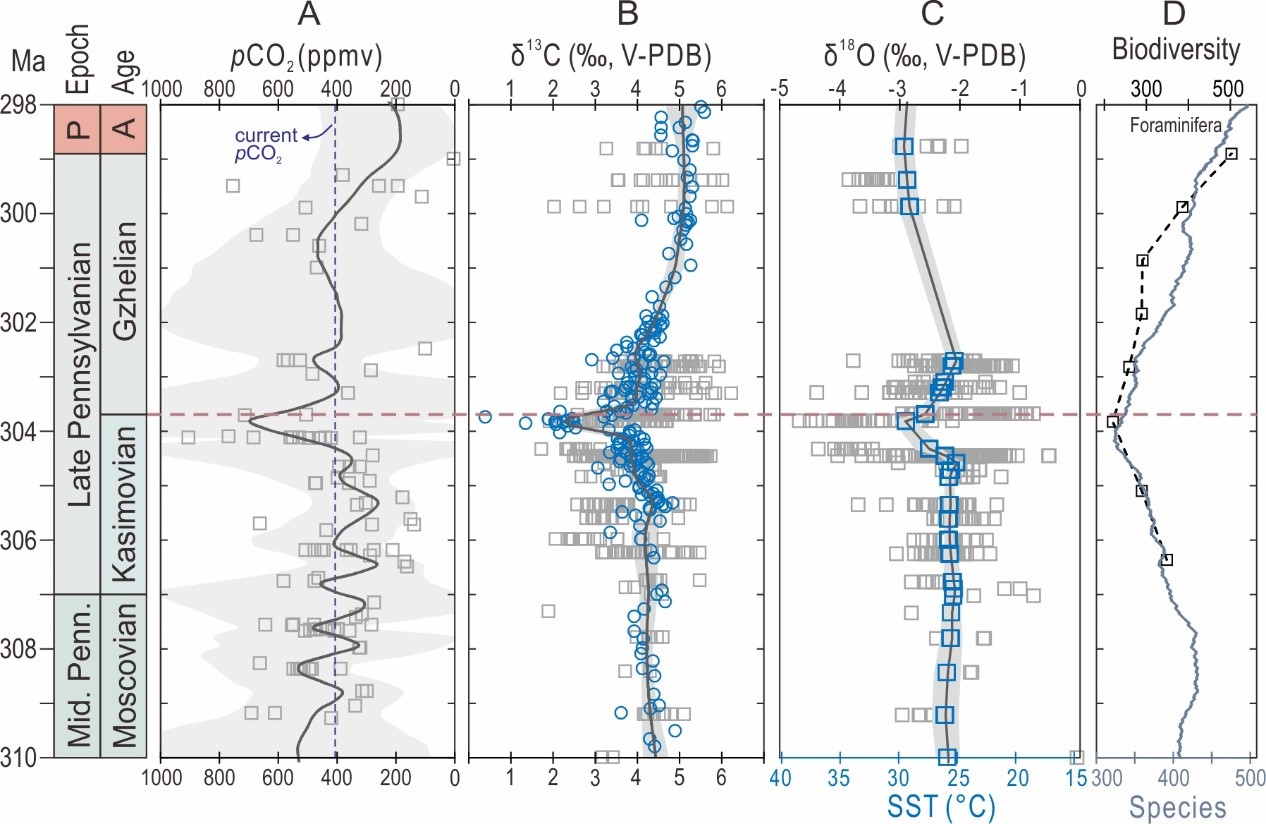What would happen in the near future with continued global warming? The episodes of climate changes in the Earth’s deep past, similar to the current global warming, may provide valuable clues to these questions. A recent study led by NIGPAS reveals that an abrupt warming linked to massive carbon emission during the late Paleozoic icehouse climate state caused approximately 20% of anoxic areal extent of the seafloor, and significant biodiversity drop. The finding was published by the PNAS on May 2, 2022.
Scientists collected samples from two Carboniferous sections from Guizhou, China and carried out carbon and uranium isotopes to explore the global carbon cycling and marine anoxia. They utilized global carbon cycle model (LOSCAR) and paleo carbon dioxide concentrations to simulate a total amount of 9,000 Gt C emitted over 300 kyr, causing an increase in sea-surface temperature by ~4℃. They also modelled an increase in areal extent of the anoxic seafloor from 4% to 22%, causing a dramatic decrease in biodiversity. The study further finds that warming-induced marine anoxia may be more pronounced in a glaciated than in an unglaciated period.

Download:
